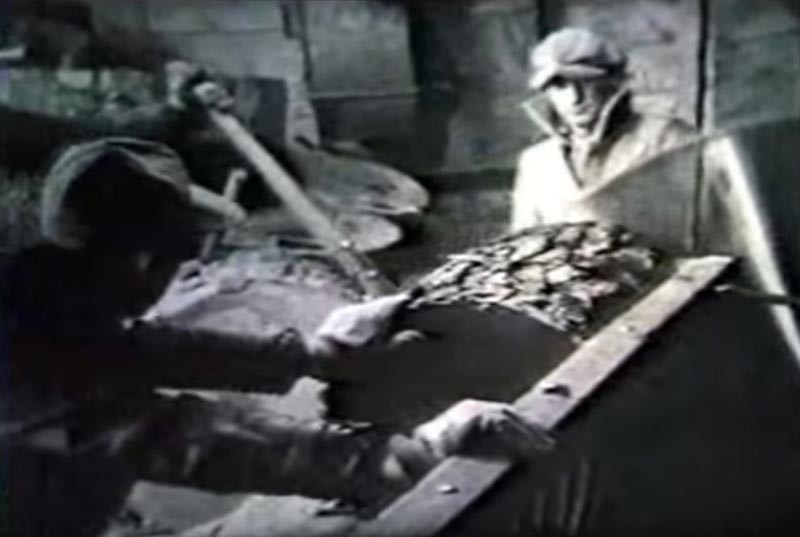A friend shared this great video with me the other day of Neil Young – not the pop star but a town-elder-type from around these parts – recounting a bobbin mill fire he fought in the 1960s. The video was produced by the Blake Memorial Library and the Corinth Historical Society, and the narration – Neil’s story of the fire – is set to historic images of the working mill.
You really want to watch it at least twice – once to really hear the words, once to absorb the images. The images give a sense of what the work was like back then, pre-OSHA. No steel-toed boots on the guys who pulled the logs off the flatbed with peavies. No earplugs, masks, or eye protection for the guys who bucked the hard maple into bolts, their bodies swaying to the rhythm of the machine as their fingers danced inches from the whirling blade. But you also get a sense of the pride that the men felt for their work – it’s visible on their faces. And it’s a cool look at how rural industry stretched from forest to mill back then. The US history they teach in school is often urban US history; we’re taught that industrialization really took off around the Civil War and in a few decades we’d become the world’s largest economy. By the turn of the century we had gramophones and electric lights, by the Roaring Twenties automobiles and radio stations and mega-cities. By the late 1940s we, economically speaking, ruled the world; with only 7 percent of the world’s population we controlled 42 percent of its income and half its manufacturing capacity; our per-capita income was $1450, about double the per-capita income of the next richest countries. (These figures from Paul Johnson’s A History of the American People.) But urban history is not rural history. In 1947 – after our grandparents came back from the war – one-third of American homes still had no running water and two-fifths no flush toilets – and that’s a national average brought up by the mega-cities. The scenes in these videos give a sense of how raw industry still was in the rural Northeast in the mid-twentieth century as well. Some of the machines – particularly the lathe – seem elegant, but the scale is quaint. It reinforces the idea that in the mid-twentieth century, in small-town New England, people were still living a life their parents and grandparents would have recognized, even while the cities were pulsing with modernity and the suburbs sprouting like chervil.
Reining in my tangent and getting back to the video, the sound is fabulous, from the story itself to the way it’s told. You’ll want to bottle Neil’s northern New England accent. I was also struck by a tic he had – he’d repeat the phrase “doesn’t matter” after tangential details. It speaks to me as an editor – it’s like the voice inside my head only he expresses it aloud. But more than that it seems insightful, somehow; a poetic look at how the way people speak and conversation is changing. There’s a tic amongst the youngish set where they sprinkle the word “right” throughout their speech. It can sound kind of pretentious – something that says we’re in the same intellectual club. But it’s also a sort of building block that lays the groundwork for a follow-up idea.
It’s so different than Neil’s old-school blunt tic, which harkens back to a time when words were doled out like rations and conspicuous consumption of anything was frowned upon; where action was valuable and talk – even your own – something to not completely trust. Instead of a conversational building block it’s a roadblock that seeks to contain a line of thought lest it get loose. Doesn’t matter.
It’s a great video, that’s the point.



Discussion *